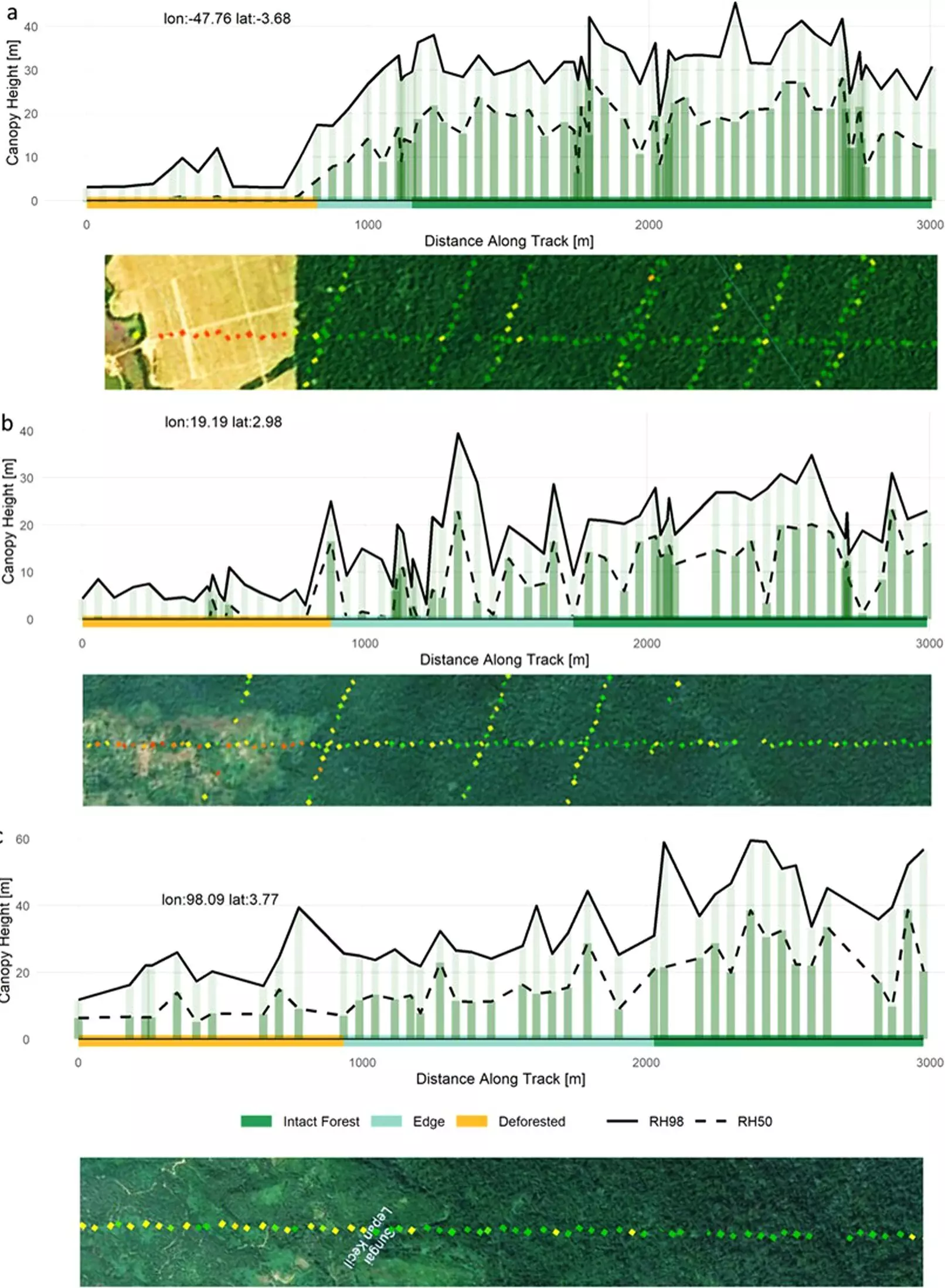Tropical forests play a crucial role in sustaining biodiversity and mitigating climate change. However, these valuable ecosystems are under threat due to deforestation, which involves the conversion of forests for various human activities. While deforestation is a well-known issue, the degradation of tropical forests often goes unnoticed. Recent research using advanced remote sensing techniques has shed light on the extent and long-lasting effects of human-driven degradation in tropical moist forests. This article will delve into the significant impacts of forest degradation and the urgent need for conservation efforts to protect these vital ecosystems.
The study published in Nature has revealed that the effects of human-driven forest degradation and fragmentation are more significant than previously thought. While deforestation receives a lot of attention, the focus on the gradual degradation of forests through activities like selective logging, fire, and edge effects is often lacking. These degraded forests, located at the edges and within fragmented landscapes, face challenges that can lead to substantial carbon emissions and biodiversity loss. It is crucial to recognize that degradation can have a larger impact than complete deforestation and should not be overlooked in conservation policies.
An international team of scientists utilized cutting-edge technology from the Global Ecosystem Dynamics Investigation (GEDI) instrument on the International Space Station to quantify degradation and fragmentation in tropical forests. By combining GEDI’s forest structure and biomass estimates with satellite observations, the researchers uncovered the hidden human footprint on tropical moist forests. The study showed that fragmentation due to agricultural or road expansion can impact forest edges by reducing canopy height and biomass. Furthermore, even low-intensity disturbances can severely alter canopy structure over a period of 20 to 30 years.
Long-lasting Effects and Vulnerability
The research highlighted the enduring effects of degradation on tropical forests. The cumulative impact of human disturbances, such as unsustainable logging and edge effects, can increase the likelihood of complete deforestation once a certain threshold is crossed. Degraded forests are also more susceptible to natural disturbances, further compromising their resilience and long-term future. These findings emphasize the need for greater conservation efforts to prevent degradation and protect already degraded forests.
Protecting Ecosystem Services
The study not only showcased the extent of degradation but also provided insights into identifying forests most vulnerable to human expansions. Considering the manifold ecosystem services provided by tropical forests, such as carbon sequestration and habitat preservation, it is imperative to prioritize their protection. The hidden human footprint of tropical forest degradation underscores the urgency of safeguarding these vital ecosystems in line with conservation commitments made at recent international conferences.
The impact of human-driven tropical forest degradation is undeniable and warrants immediate action. By understanding the extent of degradation and its long-lasting effects, we can better address the challenges faced by tropical forests. Protecting these ecosystems is not only crucial for biodiversity conservation and climate change mitigation but also for ensuring a sustainable future for generations to come. It is time to prioritize the protection of tropical forests and take proactive measures to prevent further degradation.


Leave a Reply